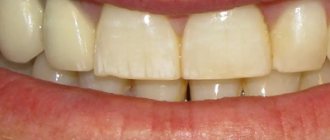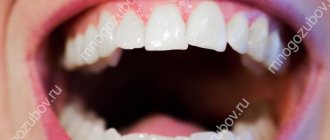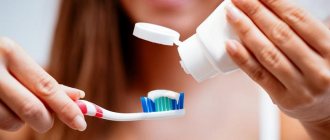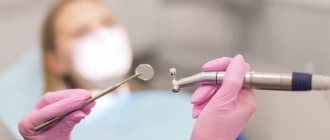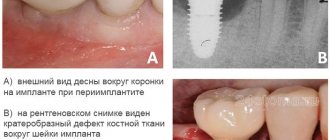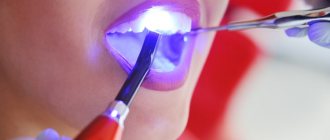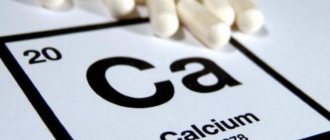Why do you need to brush your teeth?
Oral hygiene is not only a matter of aesthetics. It is due to medical reasons. A plaque constantly forms on the enamel, consisting of: • food particles; • saliva; • waste products of microorganisms inhabiting the oral cavity.
The process of plaque deposition does not depend on whether a person ate in the interval between brushings. If it is not removed, over time it turns to stone. Contamination not only creates a cosmetic defect. Deposits contribute to the violation of the integrity of the enamel. Pathogenic bacteria penetrate into the resulting cracks and actively multiply under conditions of poor hygiene. This is how caries begins with all the known consequences. These microorganisms also attack the gums. In people who neglect to brush their teeth, gingivitis becomes chronic. If the inflammation is not treated, complications in the form of periodontitis and periodontal disease are possible. As a result, the root no longer holds in the socket and the tooth falls out.
How to brush your teeth correctly?
It is a mistaken idea that everyone can do this. There are a number of rules, many of which are either unknown or ignored. However, only compliance with them guarantees effective cleaning of the enamel: • Carrying out hygiene procedures not only at home, but also at the dentist. • Rational selection of brushes and paste. • Using the optimal teeth brushing method. • Using dental floss, brushes and mouthwash. • Taking into account the condition of the gums, the presence of braces and dentures. • Compliance with the rules for storing, cleaning and replacing brushes.
Tablets for determining plaque will help you understand whether you have achieved your goal. They demonstrate whether unwanted deposits are present on the enamel. They also suggest which areas are not being worked through carefully enough.
Cleaning accessories
Everyone should have their own toothbrush. How to choose a toothbrush? What are they? When coming to a store, customers often choose products that they like better in appearance. There are many types of toothbrushes; everyone should choose one for themselves according to the recommendations.
Types of brushes
- Mechanical is the most popular and inexpensive.
- Electric is more expensive. Less effort is needed to cleanse.
In addition, you need to pay attention to the stubble. It comes in different hardnesses. You need to make the right choice:
- very soft, suitable for children and adults with sensitive enamel;
- soft – for adults with bleeding gums;
- medium – the most popular and is suitable for children over 12 years old and adults;
- hard is suitable for those who quickly develop plaque and wear braces.
A regular brush has been selected, but you still need to choose the right toothpaste. Depending on the condition of your oral cavity, your doctor can recommend the choice of toothpaste.
Types of pastes
- whitening;
- to strengthen gums;
- fluorine-containing;
- for sensitive teeth;
- children's.
Before purchasing paste, you need to know exactly what problem needs to be solved. Pay attention to the composition. The best pastes are made on a natural basis. Chemical additives in large quantities can be harmful.
Dental floss or floss is needed to properly care for your teeth. The human tooth has five surfaces; a brush cannot reach all sides. Especially a lot of food settles on the sides. Threads are used for removal. They come in different types and qualities:
- round or flat;
- waxed or not;
- different strength;
- impregnated with various compounds (chlorhexidine, menthol, antiseptics).
When buying such threads, pay attention to their quality.
Many dentists recommend a modern device for cleaning the oral cavity - an irrigator - for home use. Different types of devices are available. It is an addition to a toothbrush and is used after brushing your teeth for a more complete cleansing of the oral cavity.
Choosing a toothbrush
To completely clean the enamel from plaque, you need to choose a suitable brush. The easiest way to do this is by material. There are two options here - natural and synthetic. It is better to give preference to the latter, since they are quite elastic, and the tips of the hairs are usually rounded, which is safer for the gums. Bacteria multiply faster on natural materials.
In terms of the stiffness of the bristles, toothbrushes are: • Soft. They are best taken for children, adolescents and people suffering from gingivitis. • Average. A universal option for people without dental problems. • Tough. They help fight hard plaque and can be used only when indicated.
The configuration of the bristles should be discussed with your dentist. It will tell you where more sediment collects. For example, if you need to better work on the necks of teeth, bristles collected in bunches can handle this.
Pasta selection
Pastes are hygienic, preventive and therapeutic. The first ones solve the only problem - clean the enamel. The latter, due to the antiseptic component, help prevent the development of gingivitis and caries. Still others are prescribed by dentists for therapeutic purposes; it is better not to use them on your own.
Toothpastes are also distinguished according to the results of use: • whitening - slightly lighten the enamel, but you should not expect drastic changes from them; • strengthening – contain fluoride, good for enamel health; • desensitizing - reduce sensitivity; • anti-inflammatory - help with gingivitis.
Abrasiveness characterizes the degree of impact on plaque. The average value of this indicator is from 50 to 80. Higher values can be taken occasionally to lighten teeth. Lower abrasiveness is indicated for sensitive enamel and gums.
Irrigator for dental hygiene
An irrigator is considered an indispensable device for pronounced interdental spaces, wearing braces or the presence of periodontitis. The principle of its operation is based on the supply of a water jet under pressure, which removes food debris between the teeth. Using an irrigator, you can clean bacterial plaque, remove dirt, and massage your gums. It is permissible to use not only water as a washing liquid, but also special agents that have a therapeutic or preventive effect.
The purpose of using the device can be:
- prevention of caries formation due to high-quality cleaning of interdental spaces;
- prevention of gum disease (the massage effect improves blood flow in soft tissues, eliminates bleeding, accelerates gum regeneration when damaged);
- maintaining cleanliness of dental structures.
The device is used according to the manufacturer's instructions. Almost all models have several cleaning modes, which are selected according to the user’s needs. Thus, the mono-jet mode provides a continuous flow of jets, the pulsating mode supplies jets at short intervals (pulsation), and the micro-bubble mode creates millions of microscopic bubbles that effectively cleanse microbial plaque.
Proper brushing of teeth: sequence of movements
For hygiene purposes, you need to accustom yourself to a certain sequence of movements.
After squeezing the paste onto the brush, you must: • apply it to the teeth at an angle of 45 or 90 degrees; • pass each one 3-4 times in the direction from the gums to the cutting edge; • treat chewing surfaces with circular movements; • Allow at least 30 seconds of brushing for each half of the jaw. Depending on the location of the brush and the direction of movement, there are three methods of brushing teeth. The most famous (90 degree brush, top to bottom movements) is the Leonard method.
The Bass method involves choosing an angle of 45 degrees and making vibrating movements. It is good because the bristles penetrate into the interdental spaces and partially work out the contact surfaces. With the Fones method, an angle of 90 degrees is taken and the brush moves in a circle. This further massages the gums, which improves blood circulation and protects against inflammatory processes.
What else can you do?
Dental health depends not only on hygiene. Dietary habits also have a huge impact on their condition. To keep your teeth healthy, you need to:
- Reduce consumption of simple sugars (sweets, flour products.
- Eat a varied diet (all product categories should be present on the menu).
- Eat more vegetables and greens.
- Limit servings of coffee and tea.
- Organize breaks between meals for 3-4 hours.
Keeping your smile healthy is not that difficult. Hygiene procedures take up to 10 minutes a day. Proper eating habits improve the health of the entire body, not just the teeth. Therefore, it makes sense to follow the listed recommendations, gradually introducing them into life. By making a little effort on yourself, you can prevent many problems in the future.
Additional oral cleansing
Oral hygiene is not limited to two rows of teeth. For complete cleansing it is necessary to treat: • Interdental spaces. Dental floss or a brush will help remove plaque. • Language. To do this, use the relief surface of the back of the toothbrush or a special scraper. • Gums. They are partly cleaned with a brush: at an angle of 45 degrees, the bristles approach the edge and capture deposits. Rinse aid also helps. • Cheeks. You can go over them with the back of the brush, but they require more rinsing.
You need to start by removing the largest food debris. To do this, just rinse your mouth with water. Then comes the turn of fragments stuck in the interdental spaces - this is where floss comes to the rescue. Now you can take up the brush with the paste. Rinse aid is used last - to create a protective layer.
Why do you need toothpaste and floss?
What hygiene supplies are needed to properly care for your oral cavity? First of all, a toothbrush . It must be individual, corresponding to the condition of the teeth and gums. It is better to select it with a dentist, since toothbrushes differ in the softness and structure of the bristles.
Toothpaste is the second important element of care because it:
- cleanses;
- protects against caries;
- whitens;
- polishes;
- freshens breath;
- covers teeth with a protective layer, etc.
It is also better to choose it with a dental hygienist. But in general, if there are no problems, then fluoride toothpaste is used to prevent dental diseases and maintain healthy teeth and gums.
The third component is floss for cleaning interdental spaces. Unfortunately, in Russia the habit of using dental floss is not so widespread, although in the United States most adults follow the recommendations for the use of floss.
Don't forget to use a mouth rinse to remove food debris from areas of your mouth that are hard to reach with a toothbrush and leave your breath fresh.
How to brush your teeth with gingivitis?
Inflammation of soft tissues is not a reason to neglect hygiene. On the contrary, the more often cleansing is done, the less chance bacteria have to support the inflammatory process.
However, you need to take precautions: • choose brushes with soft bristles (preferably rounded); • choose a paste with low abrasiveness and containing medicinal herbs; • give preference to the Bass method, and abstain from the Fones method until remission; • move your hand more carefully to avoid painful sensations.
Cleaning time should not be shortened, even if the procedure causes discomfort. Sometimes dentists even recommend increasing it. Inflammation of the gums is accompanied by the formation of pockets. Where their edges lag behind, stone grows with particular intensity. This place deserves more careful study.
How to clean dental structures?
Dental structures in the mouth make adjustments to the cleaning process: • Crowns. More attention should be paid to the area where the gums come into contact with the prosthesis. • Bridges. A round mono-tuft brush is more suitable for them. • Veneers. The teeth where they are installed cannot be treated with floss. The ban does not apply to other methods. • Braces. The space under the arch and the area adjacent to the enamel is cleaned with brushes.
In all of the above cases, it is necessary to use an irrigator. Conventional cleaning devices are not able to penetrate all the places where plaque accumulates. There are no barriers for water. Under the pressure set by the device, it knocks out stuck food fragments, preventing them from decomposing or turning into stone.
How to choose an electric brush for a child
From the age of 3 you can start using an electric brush. The advantage is that in children's lines you can find great opportunities for interactivity.
Some brands produce electric brushes with the ability to control brushing time via an app. The mobile application synchronizes with the brush and uses animated prompts to teach your child how to brush their teeth correctly. This helps maintain interest in the process.
For children aged 3 to 6–7 years, an electric brush with the softest bristles is suitable. It can be alternated with a regular brush. But remember: the use of an electric brush by a preschool child needs to be supervised.
How do plaque tablets work?
We usually contact a dentist to assess the quality of oral hygiene. It identifies areas that are not cleaned effectively and makes recommendations for replacing the paste or brush. But in between visits to the clinic, you can cope without the help of a doctor.
Special tablets, developed by the Swiss company CURADEN, will help with this. They are part of the CURAPROX range of dental care products. Determination of plaque occurs as follows: • the tablet is diluted in water; • after brushing, a person rinses his mouth with this solution, distributing it over his teeth; • deposits are stained, clean enamel remains intact.
The tablets also help distinguish soft plaque from tartar. The first one becomes pink, the second one becomes dark blue. This way you can understand whether it’s time to go for ultrasonic cleaning.
Why you need to take good care of your mouth
With the introduction into practical dentistry and the improvement of various bone grafting techniques, implantation, as the most reliable method of restoring the dentition, has become available to patients with serious deficiency of bone tissue of the upper or lower jaw. Sinus lifting is considered one of the most minimally traumatic and safe operations in dentistry. There are two main types of this manipulation – open and closed sinus lift. After performing any of them, the patient must properly and regularly care for the oral cavity.
One of the main advantages of open sinus lifting is that the operation is quite effective even with pronounced atrophic processes in bone tissue. To raise the bottom of the maxillary sinus, the surgeon makes an incision in the soft tissue of the gums, which must be sutured after the remaining stages of the operation. The presence of fresh sutures in the oral cavity is one of the risk factors for postoperative complications, therefore, after an open sinus lift, you must strictly follow the doctor’s recommendations and ensure proper oral care.
With a closed sinus lift, trauma to healthy tissue is minimized, but this does not mean that after this treatment option the rules of hygienic oral care can be neglected. Although there are no incisions or stitches during a closed sinus lift, soft tissues are still injured when a small hole is made, through which the mucous membrane of the maxillary sinus is lifted and an implant is implanted. In order for the implant structure to be securely fixed, and the tissues adjacent to it not to undergo an inflammatory process, oral care after sinus lifting must be comprehensive and regular.
Oral care: main goals
Everyone knows that daily hygienic care of teeth and gums is an integral part of a healthy lifestyle. It helps keep your smile beautiful and radiant, your gums healthy, and your teeth strong. However, after performing a sinus lift, oral care is necessary not only for this. The main goals of careful oral care after this intervention are:
- Ensuring the patient's comfort in the postoperative period.
- Elimination of symptoms of inflammation, which is the body’s physiological response to even minor trauma to healthy tissue.
- Preventing postoperative wound infection.
- Creating favorable conditions for soft healing and bone tissue regeneration.
Comfort
Some patients believe that after an intervention in the oral cavity, hygienic brushing of teeth and other oral care measures will have to be forgotten for the first time. However, this is not true; you can and should feel comfortable even after performing bone grafting.
The main thing is to remember simple recommendations for proper brushing of your teeth, as well as regularly follow other doctor’s recommendations. Taking gentle oral care after a sinus lift will make you feel comfortable and confident immediately after surgery.
Elimination of the inflammatory process
Despite the low-traumatic nature of sinus lifting, the inflammatory process cannot be avoided after the operation. This is not a complication, since the appearance of slight swelling, tissue redness and soreness is considered a natural reaction of the body to even a minimal violation of the integrity of the skin and mucous membranes. Therefore, if you experience minor discomfort, pain and swelling, you should not panic.
The main thing is to properly care for your oral cavity and take medications prescribed by your doctor.
Prevention of infection
Poor oral hygiene is the main factor in the development of postoperative complications of infectious origin. Without proper care, pathogenic microorganisms multiply at an accelerated pace in the oral cavity, which, given the presence of a postoperative wound or fresh sutures, can cause serious complications.
This is why it is dangerous to forget about regular brushing of teeth and rinsing with antiseptics after performing any osteoplastic surgery. If the patient is responsible for hygienic oral care, then the risk of infectious complications after sinus lifting is minimal.
Recovery
The recovery processes in the body are influenced by many factors. When bone grafting is performed, it is very important that the osteoplastic material introduced to the patient takes root well, and that the tissues damaged during the operation heal quickly. These processes are influenced by following a proper diet, taking medications and vitamins in the postoperative period, as well as proper oral care.
If you do not pay due attention to oral hygiene after a sinus lift, the tissues will heal more slowly, and more time will have to be spent on bone regeneration, and therefore on the complete restoration of the tooth.
What does proper oral hygiene consist of?
After a sinus lift, the patient needs to pay attention to the following components of proper oral care:
- care of postoperative sutures (after open sinus lifting);
- regular teeth cleaning;
- rinsing or bathing with antiseptic solutions;
- using dental floss.
Caring for the oral cavity after a sinus lift is not particularly difficult, especially if the patient was responsible for personal hygiene before the procedure. Depending on the existing dental problems, the doctor may add any items that are necessary in this particular case.
Consequences of not brushing your teeth properly
Proper and timely cleaning of dental plaque is protection against oral diseases.
If you neglect it, the consequences will only increase: • Tartar forms. It gives off an unpleasant odor. If you do not carry out ultrasonic cleaning, it will become a favorite place for bacteria. • Bacteria will destroy the enamel. The abundance of pathogenic microorganisms quickly leads to caries. • Bacteria will cause your gums to become inflamed. Soft tissues are no less sensitive to them than hard ones. And this means bleeding, swelling and an unpleasant odor.
Possible complications are also worth mentioning. Caries develops into pulpitis, which requires removal of the nerve. This deprives the tooth of nutrition, as a result of which it sooner or later collapses. Progressive gingivitis is fraught with periodontitis and periodontal disease. Lack of oral hygiene leads to tooth loss. Restoring them is more expensive than the cost of a brush, paste and professional cleaning. Therefore, it is better to remember these simple rules and follow them.
What should the diet be like?
When it comes to your diet, you should limit the amount of food that can damage your teeth. First of all, this concerns mechanical damage: too hard, too cold, too hot - in a word, everything that is too much is dangerous. So, if you crack nuts with your teeth, and then eat hot and drink cold, prepare for the worst. The same applies to strongly alkaline or acidic foods.
Healthy eating is the key to healthy teeth
Plus to all this, there is an opinion that sweets are very harmful to teeth. This is true, but for healthy teeth I want to tell you a secret: chocolate candy is much safer than long-lasting sucking or caramel. Why is that? Because the remaining chocolate is washed by the saliva of the mouth and completely goes into the gastrointestinal tract. But the decay products of caramels remain on the teeth for a very long time, and, unnoticed by you, they begin to spoil them.
In addition, do not forget to eat foods that help strengthen your teeth. Your diet should definitely include apricots: they have a very beneficial effect on the condition of your teeth. But, we want to warn you right away: no matter how many apricots or vitamins you eat, it will still not help you restore your teeth. It will simply slow down the processes of their deterioration. To our deepest regret, nothing can restore your teeth.


